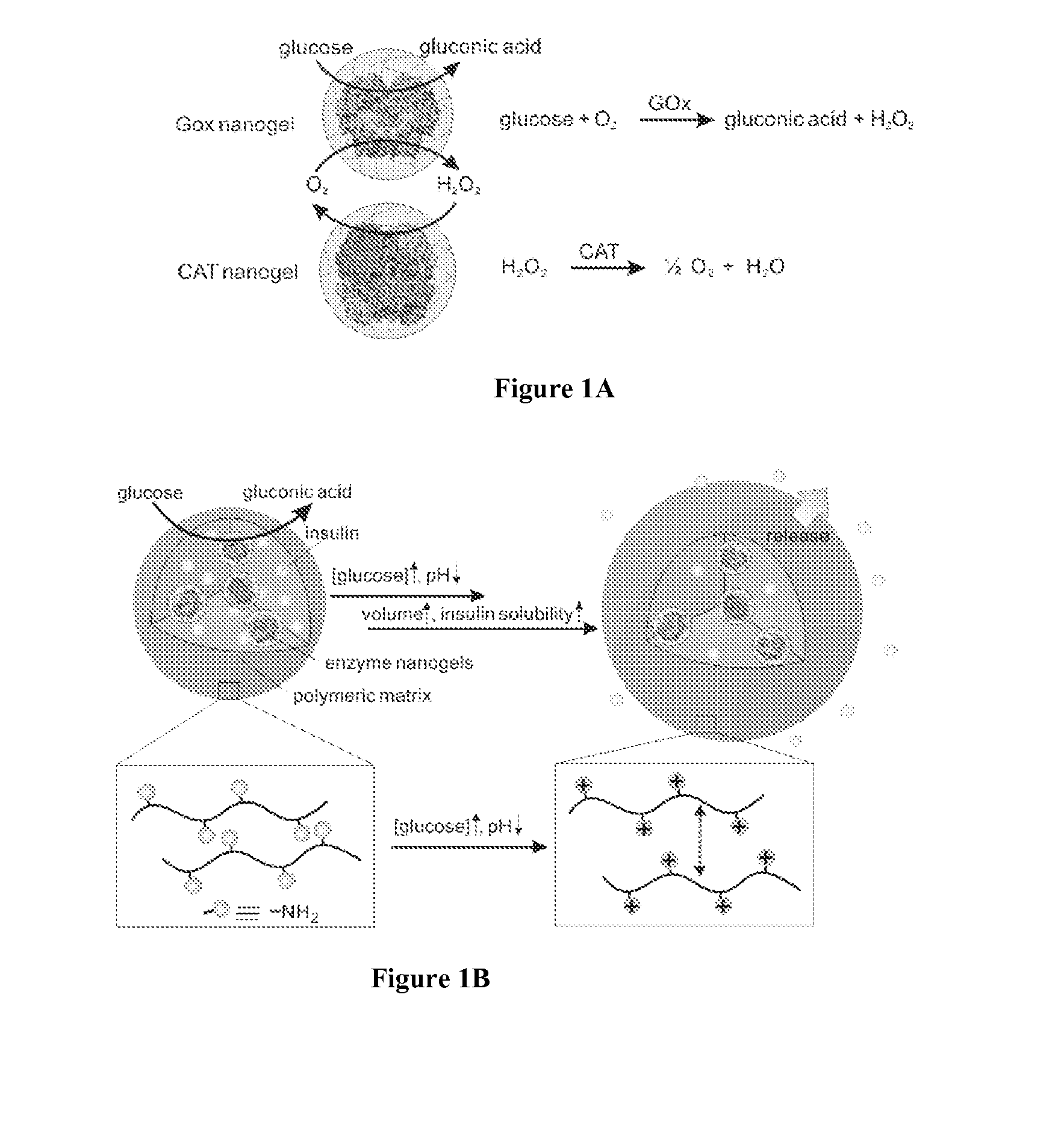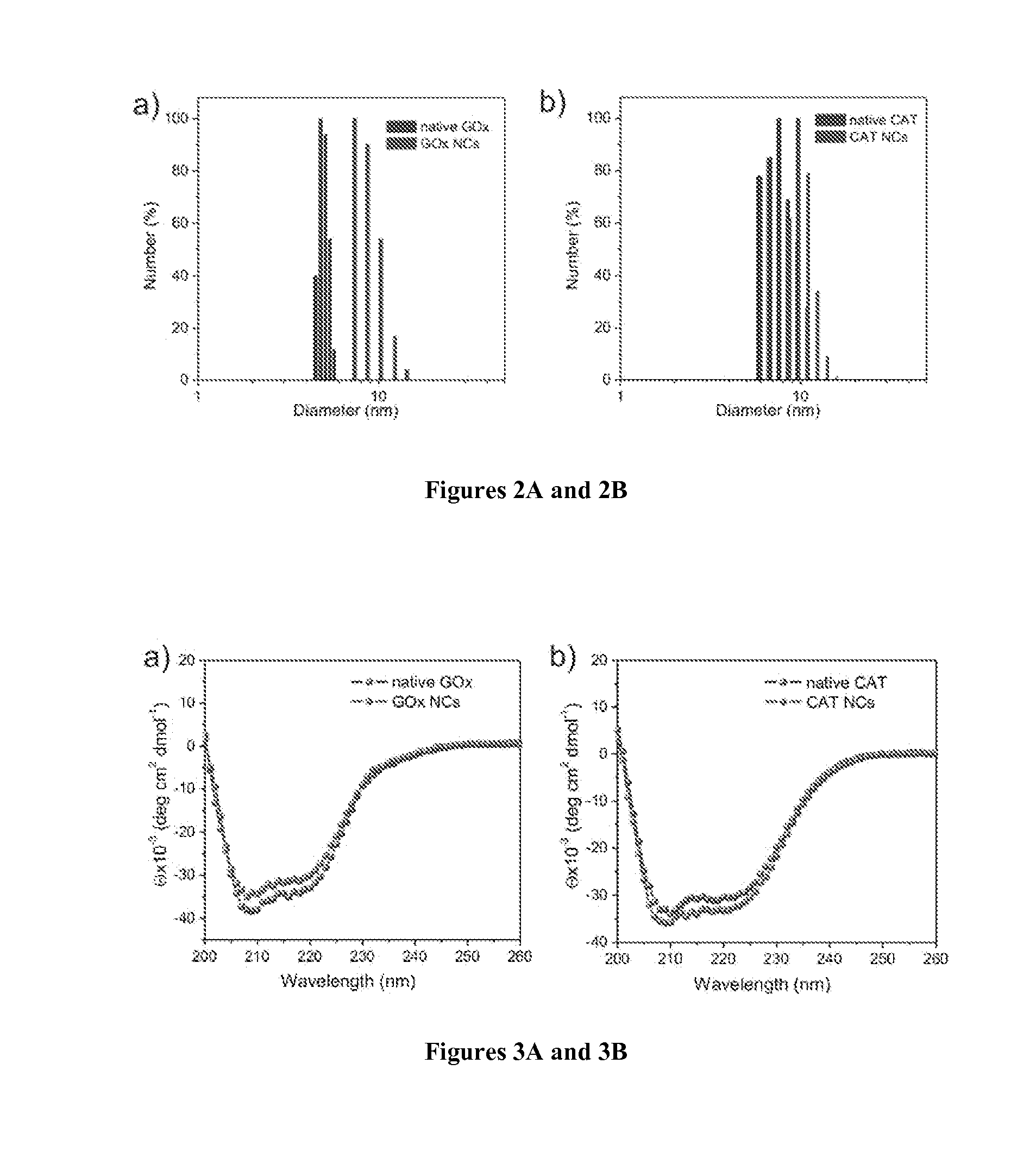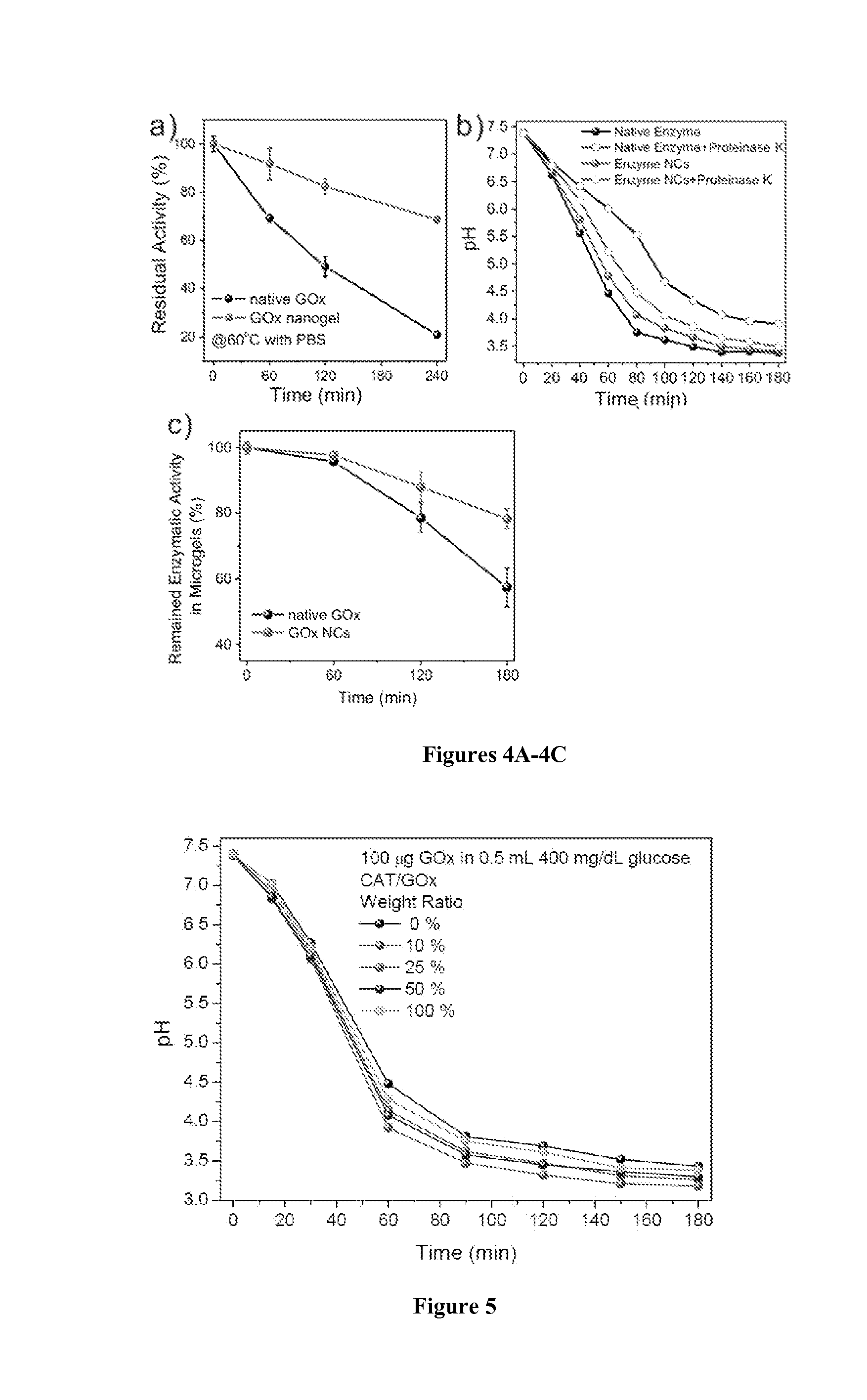Glucose-responsive microgels for closed loop insulin delivery
- Summary
- Abstract
- Description
- Claims
- Application Information
AI Technical Summary
Benefits of technology
Problems solved by technology
Method used
Image
Examples
example 1
Preparation and Characterization of Enzyme Nanocapsules
[0120]Materials and Methods
[0121]A volume of 12 mg GOx or CAT in 4.0 mL of pH 8.5, 50 mM sodium carbonate buffer was reacted with 6 mg N-acryloxysuccinimide in 40 μL dimethyl sulfoxide (DMSO) for 2 h at room temperature.
[0122]Buffer exchange with 1×PBS was carried out for three times (Amicon Ultra-15 50 K devices, Millipore Corp.). The degree of modification was 23 vinyl groups per GOx or 32 vinyl groups per CAT, measured using 2,4,6-Trinitrobenzene Sulfonic Acid (TNBSA, Thermo Fisher Scientific Inc.).
[0123]Modified enzyme (e.g., functionalized with polymerizable groups, such as vinyl groups) was diluted to 1 mg / mL with 10 mM pH 8.5 sodium bicarbonate buffer. 40 μL acrylamide (AAm) monomer, prepared in a 200 mg / mL aqueous solution, was added to 6 mL of protein solution with stirring for 10 min at 4° C. The other monomer N-(3-Aminopropyl)methacrylamide (APMAAm) was added. Afterwards, crosslinker N,N′-methylene bisacrylamide was a...
example 2
Preparation and Characterization of Insulin Releasing Microgels
[0132]Materials and Methods
[0133]Using chitosan as a model polymer, a closed-loop based smart insulin delivery system endowed with islet-cells-like function was prepared. Chitosan was selected because it is biocompatible, readily protonated in vivo (pKa: 6.2-6.8), and inexpensive.
[0134]To prepare chitosan-based microparticles, a high-voltage electrospraying system based one-step process was utilized to obtain narrow size-distributed particles. Tripolyphosphate (TPP), a non-toxic biocompatible crosslinker, was used to crosslink chitosan matrix encapsulated with enzyme nanocapsules and insulin through ionic interactions between positively charged amino groups and negatively charged counterions of TPP. A schematic diagram of the experimental equipment is shown in FIG. 6.
[0135]An aqueous solution of chitosan (2% w / v) was prepared by dissolving sterilized chitosan powder (molecular weight: −200 kDa, degree of acetylation 75%)...
example 3
In Vitro Insulin Release in a Glucose-Responsive Fashion
[0144]Materials and Methods
[0145]To determine glucose response capability of the microgels, microgels (insulin content: ˜0.25 mg) were collected by spinning down to pellets at 3000 rpms for 30 seconds and incubated with 0.5 mL 1×PBS solutions with different glucose levels: hyperglycemic level (400 mg / dL), normal level (100 mg / dL) and control level (0 mg / dL) glucose solution in a 48-well plate, which was left on a heating stage fixed at 37° C.
[0146]Optical or fluorescence microscopy images of microgels incubated in different solutions were separately recorded over time. For plotting accumulated release profile, microgels were similarly incubated with solutions at different glucose levels at 37° C. At predetermined time points, the sample was gently shaken for 30 seconds and 12 μL of the supernatant was removed for analysis. 12 μL of fresh solution was then added to the tube to maintain a constant volume and placed back within th...
PUM
| Property | Measurement | Unit |
|---|---|---|
| Concentration | aaaaa | aaaaa |
| Responsivity | aaaaa | aaaaa |
| Biocompatibility | aaaaa | aaaaa |
Abstract
Description
Claims
Application Information
 Login to View More
Login to View More - R&D
- Intellectual Property
- Life Sciences
- Materials
- Tech Scout
- Unparalleled Data Quality
- Higher Quality Content
- 60% Fewer Hallucinations
Browse by: Latest US Patents, China's latest patents, Technical Efficacy Thesaurus, Application Domain, Technology Topic, Popular Technical Reports.
© 2025 PatSnap. All rights reserved.Legal|Privacy policy|Modern Slavery Act Transparency Statement|Sitemap|About US| Contact US: help@patsnap.com



